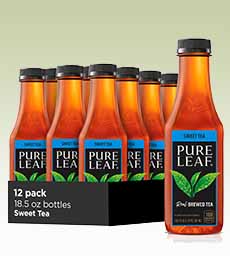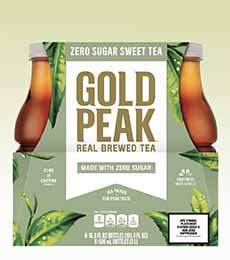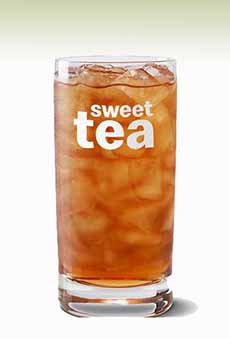The History of Sweet Tea For National Sweet Tea Day
|
|
August 21st is National Sweet Tea Day. For those who haven’t had the experience, sweet tea, also known as sweet iced tea, is more than an iced tea with sugar. It’s iced tea with lots of sugar. It’s a staple drink in the southern U.S. A 16-ounce glass of sweet tea has 42g to 44g of sugar. Let’s compare that to regular iced tea. A typical heaping teaspoon of sugar is 7.5 grams. If you added three heaping spoonfuls to a glass of plain iced tea—and that’s a lot of sugar*—it’s still just half the amount of sugar as in sweet tea. You can have your sweet tea plain, with a wedge of lemon, or accented with mint, peach, or raspberry. But no matter how you like it, nutritionists recommend that you have sweet tea as a special occasion drink, not your everyday, all-day beverage. > The different types of tea. The oldest known recipe for sweet tea was published in an 1878 community cookbook called Housekeeping in Old Virginia by Marion Cabell Tyree. Sweet tea could easily have been in fashion for numerous decades before then, but sugar was pricey. A regular lump or two in a cup of tea was elegant enough. Sweet tea began as a luxury item: tea, sugar, and ice were all expensive (ice was possibly the most costly of the ingredients since it had to be stored and shipped from afar) [source]. A little pre-sweet-tea history: Tea was introduced to the Colonies by the Dutch—first-class world traders—in the late 1640s. By the time Dutch East India Company Director Peter Stuyvesant arrived in New Amsterdam in 1647 to become the city’s governor, serving tea—an expensive product—had become an established ritual in upper-class households. The British took control of New Amsterdam in 1664 and renamed it New York. As in England, tea continued to play the same important social role. Most people will be surprised to know that green tea was the predominant variety consumed in Colonial America. It was imported from China and Japan, both green tea cultures (even today, Japan produces only a handful of specialty black teas; China expanded into numerous styles of black tea). So it was mostly green tea that was dumped into Boston Harbor in 1773. (What you learned in school about the Boston Tea Party may not have been accurate. Here’s the real scoop.) But before then, in the 1760s, American colonists were drinking more than 1 million pounds of tea per year during the 1760s. In 1839, which was the beginning of Britain’s Opium Wars with China, the British began to grow their own tea in India (American ships continued to bring green tea to the U.S.). Black tea† was the more popular style in India, and British tea merchants brought back Assam and Ceylon black teas to Europe and the U.S. By the first part of the 20th century, Americans were evenly split between green tea and black tea, drinking around 40% green tea, 40% black tea and 20% oolong† tea [source]. World War II cut off trade with Japan and much of the tea—producing regions of China were occupied. The alternative was black tea from India and Ceylon. After the war, Americans continued to drink almost solely black tea: upwards of 99% according to the U.S. National Library of Medicine [source]. While green tea reemerged in the U.S. with awareness of its antioxidant qualities some 20 years ago, America remains a black tea country to this day. (We love all varieties of black, green, and oolong teas, but truth to tell, we think milk and sugar taste a lot better in black tea.) *The American Heart Association recommends an added-sugar limit of no more than 100 calories per day (about 6 teaspoons or 24 grams) for most adult women and no more than 150 calories per day (about 9 teaspoons or 36 grams of sugar) for most men [source]. †Black tea is green tea that has been oxidized by fermentation for two to four hours, to a black color. The tea is then fully oxidized (oolong is half-oxidized) and dried slowly over a low heat charcoal fire, called panning or roasting. Black tea is the most common form of tea drunk worldwide (and tea is the second-most beverage drunk worldwide, after water). See more in our Tea Glossary. |
|
|
|
||




